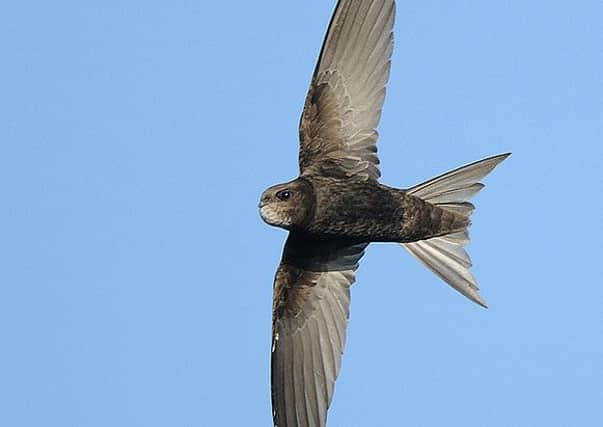Birdwatch: The first migrants are already making their epic treks


Many swifts have already gone to spend the winter in southern Africa. The young birds leave first, almost immediately after fledging, and without any adults to guide them because the parents, after feeding chicks for up to seven weeks, need time to build up their own fat reserves before they leave.
There are usually two to three chicks in each nest which hatch two or three days apart. At about three weeks old they begin to move around the nest chamber and exercise by performing press-ups on their wing tips to strengthen them.
Advertisement
Hide AdAdvertisement
Hide AdThey spend long periods at the nest entrance looking out then, early one morning, one of them stretches its wings outside the nest before plunging downwards, flapping furiously, before soaring up again. The others follow in a day or two and they then fly off to join other fledglings for the journey.
Sometimes one of them fails to take flight and, with its long wings and short legs, finds it very difficult to take off from the ground. Anyone finding a grounded swift can place it in the palm facing outwards, then move the arm gently up and down so that the swift can feel the air under its wings. It should then take flight – if it fails to do so it could be malnourished or injured.
Expert help should be sought as swifts are very difficult to care for and cannot feed from the ground although they can take water from a cotton bud or finger tip to prevent them becoming dehydrated.
Sand martins are also leaving their colonies along river banks and in quarries and the juveniles again move off first, joining up with other colonies. These departures often result in large gatherings over freshwater to feed and roost in surrounding reedbeds – this week there has been a roost of at least 10,000 sand martins at the Blacktoft Sands reserve.
Advertisement
Hide AdAdvertisement
Hide AdThey travel via Spain and the Straits of Gibraltar and most will be in Africa by October.
Most swallows leave here early next month and also roost in large numbers in reedbeds such as Blacktoft Sands en route.
Adult cuckoos, including those radio tagged by the British Trust for Ornithology, have also left this country and some are already south of the Sahara. Juvenile cuckoos continue to be fed by their host parents for a little while longer before they leave for Africa this month and next, again without any help from adult cuckoos.
Other migrants on the move have included the first common redstarts, whinchats willow warblers and wheatears while more greenshanks, green and wood sandpipers, curlew sandpipers and little stints have also been reported.
Advertisement
Hide AdAdvertisement
Hide AdGarganeys, the only ducks that are a summer visitor to this country, seem to have had a good breeding season with seven, including a juvenile, seen at Fairburn Ings and several adults and young at other Yorkshire sites.
Common terns have also prospered with a record 21 pairs at Swillington Ings this year.